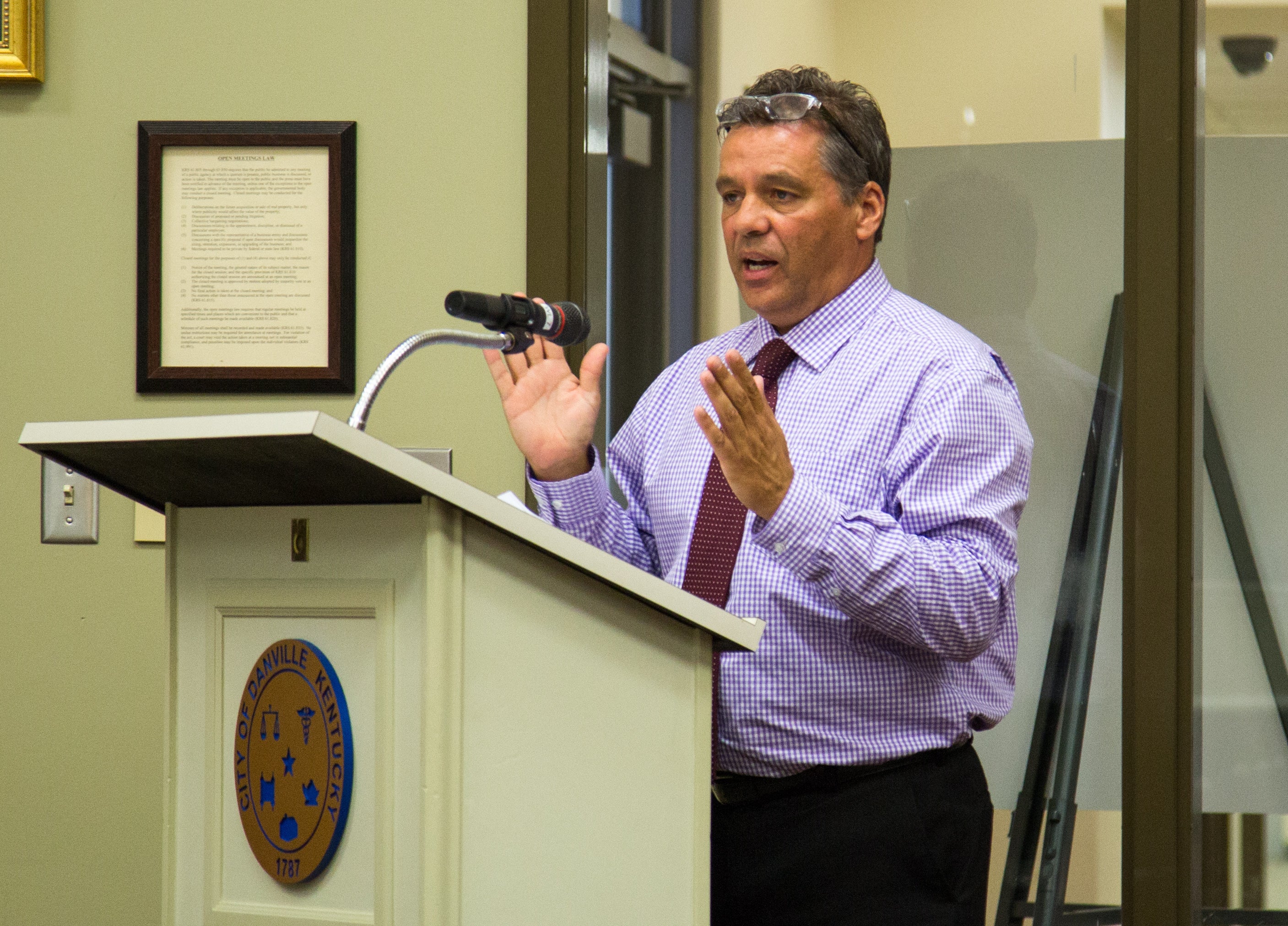Preliminary P&Z budget has more expenses than revenue
Published 11:35 am Monday, January 15, 2018

- File photo by Ben Kleppinger Steve Hunter, director of Danville-Boyle County Planning and Zoning, speaks before the Danville-Boyle County Planning and Zoning Commission earlier this year.
Danville-Boyle County Planning and Zoning would spend about $23,000 more than it brings in next fiscal year, under a preliminary budget draft discussed by the P&Z Budget Committee this week.
The draft budget plans for $218,003 in expenses, but anticipates only $194,850 in revenue, with most of that coming from three big sources: $70,000 apiece from Danville and Boyle County; and $40,000 from zoning permit fees.
Nothing is final about the budget; the budget committee has not formally recommended anything yet.
P&Z Commissioner and budget committee member Terry Manon said he is “uncomfortable” with a budget that’s running in the red at the end of the year. This year’s P&Z budget also plans for a net operating loss of around $22,000, but that’s because of extra expenses related to the retirement of former P&Z Director Paula Bary, Manon said.
P&Z Commissioner Wendy Rochester said she is also “hesitant” about the budget.
New P&Z Director Steve Hunter said P&Z has often operated with a loss in the past; because it’s funded by fees tied to construction activity, it’s prone to dealing with boom and bust years, with the boom years making up for losses in the bust years, he explained.
Hunter also said during the meeting he would like to see P&Z move toward a more stable funding plan in the future. Most P&Z agencies around the state do not depend on their fees to operate, he said.
Hunter has supported the idea of doing away with or significantly reducing the amount of money P&Z brings in from zoning permit fees. But he said Thursday that might not be possible this year: Danville and Boyle County would likely have to give P&Z additional funding to make up for reduced fees, and the state’s current pension crisis means no one has extra money around.
Hunter said he’s planning to sit down with city and county leaders at the end of January to discuss what they would support in terms of P&Z funding. It was suggested during the meeting that if P&Z went to flat fees for residential zoning permits instead of basing them on square footage, it could reduce fees by $20,000 annually. If Danville and Boyle County each pitched in an extra $10,000, it would cover the cost of that change.
Hunter reiterated his main complaint about P&Z’s zoning permits revenue: It falls largely on residential customers who want to build additions on their homes; not on commercial or other customers who might have bigger pockets.
Data provided by Hunter backs that up: In 2017, residential zoning permits made up 75 percent of all zoning permits filed and 58 percent (almost $26,000) of the approximately $47,000 collected. In 2016, residential zoning permits brought in more than $28,000; in 2015, more than $38,000; and in 2014, more than $28,000.
Hunter said like Manon and Rochester, he doesn’t like budgeting for a net loss. But in this case, there are several reasons it might be appropriate:
• P&Z does have a large carryover — more than $77,000 — which represents substantially more than the 10-percent contingency fund the city and county want P&Z to carry;
• the budgeted revenues from P&Z fees are very “conservative” by design, meaning they could easily exceed what’s listed and erase the deficit; and
• the pension crisis makes this a difficult year to tackle the switch from a fee-driven agency to an appropriation-driven agency.
Hunter said he will be talking with the city and county about updating the “fairly dated” interlocal agreement that created P&Z, so that it better reflects how things operate. As it stands now, the interlocal agreement says the city and county will each pay 44 percent of P&Z costs, though that’s not how things have actually operated for years.
“That’s not a good way to do an interlocal agreement … what we need is a solid funding formula, and maybe it stays the same dollar amounts, but it should hold us accountable,” Hunter said. “… What it says basically is we figure out how much we need, and then we come ask you for 44 percent of that. Well, that’s not going to work … that’s open-ended money. And it’s not how it’s been done. So we need to get the agreement to match up with what we do.”
Michele Gosser, chief financial officer for Danville, attended the meeting and said she is OK with the proposed budget because it’s not being proposed as a long-term solution and there is a big carryover available. The city and county may not even want to up their contributions to P&Z until there isn’t such a big carryover, she said.
Gosser said if P&Z is going to pursue the budget as proposed, it needs to have a contingency plan for what it does if there isn’t enough revenue or too many expenses.
Hunter said P&Z’s only real contingency in terms of cutting costs is in the personnel category.
“Unfortunately, that is the contingency plan,” Gosser said. “It’s unfortunate and it’s bad to say, and I hate it, but that’s how it works in the world. By looking at this (budget), I’m not overly concerned.”





